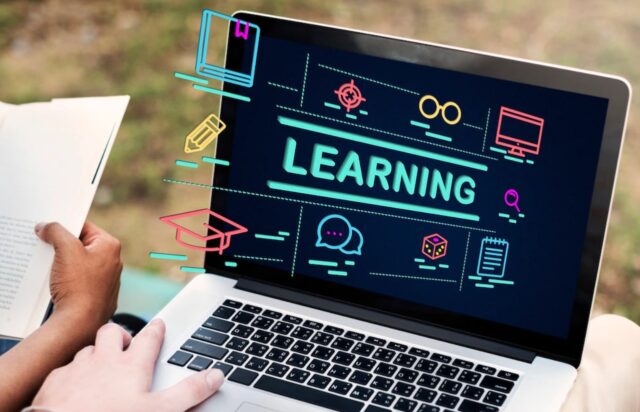
Implementing suitable LMS systems is becoming increasingly urgent as more and more businesses see the potential of digital content to enhance their online and blended programs. Click here to find the top LMS systems for your business.
However, before you do that, suppose your firm uses a reliable Learning Management System. You can ensure that your employees receive the best corporate training, including instruction on compliance issues and enhancing their existing skill sets. You must plan and prepare ahead of time to improve your employees’ training chances.
Planning is essential once introducing an LMS into your business’s training infrastructure.
To guarantee a trouble-free rollout, the team must adhere to best practices for implementing a learning management system (LMS). This means that everyone with a stake in the outcome of the strategy will have input. Having a strategy for introducing an LMS into training is the first prerequisite.
This document outlines the responsibilities of various parties involved in moving your training and education systems. Following these best practices for implementing a learning management system will help you avoid common pitfalls and stay on track.
Emphasize content curation:
LMSs can be considered virtual bookcases, with the e-learning materials housed within them representing the books. Beautiful and costly bookcases will be depressingly lifeless if they aren’t stocked with reading material. Experts in learning and development (L&D) are responsible for disseminating the organization’s and its SMEs’ tacit knowledge to the broader workforce. A solid learning plan should start with a solid foundation, and you’ve laid one there.
Developing material that is both interesting and useful takes a lot of time and effort, often in the form of months. Careful compilation and preparation of HTML Courses, Required Documentation, Tests, and Tasks for each training topic is required. Either in-house with the help of instructional designers and authoring tools or externally with the help of specialized e-learning firms, content development is possible. Creating a realistic LMS budget necessitates taking all of these considerations into account. Excellent results from an LMS only occur when high-quality content is uploaded.

Determine Your Aims:
Know what you want to accomplish and how you want the project to turn out before you start. Exactly what do you hope to accomplish with this new method? There have to be transparent indicators of progress toward goals. Prioritizing your list of objectives is a good practice while you brainstorm. Emphasize the most important aspects and then move on to the lesser ones. One typical blunder is to attempt to use the new system as though it were the old one. Keep in mind that this is a chance to hone and improve upon future goals while maintaining established successes.
Setting Up the Right Team for Successful Implementation
Successful implementation of the LMS plan requires talent from all departments to work together as a team. Before starting the process, you must identify the right people and get them on board. A company-wide LMS implementation is no joke and needs champions from each department to assemble to make the implementation a success. The team usually requires the presence of team leaders, project managers, eLearning specialists, HR experts, IT administrators, and training administrators. Once the implementation team is all set, you can go ahead with your strategies to reach your goals. https://wheelhouse.com helps you compare LMS software so you’ll know which software is best to use for your business.

The User Experience Is Key:
A learning management system must benefit its learners effectively. The effectiveness of the offered content for learning and retention depends on the LMS’s usability and intuitiveness. Before any implementation effort, a survey of end-users, upper-level managers, and system administrators is essential. These conversations should include not only how well something works and how easy it is to use but also whether any particular considerations are needed based on location, type of job, employee role, experience, or skill level. You may improve your user interfaces by soliciting and using that feedback to make changes.
Continuous progress:
Updating the LMS with engaging material that compels workers to log in and improve their abilities takes time and effort. Training has to be identified that captures attention, planned for delivery via eLearning, classroom training, or a blend of the two, executed, and the results reviewed on an ongoing basis. When done right, it fosters an environment where everyone is committed to lifelong education.

Format Your Reports However You Like:
All LMSs have their unique methods of reporting data. These reports can usually be tailored to include the information that is most relevant to you. To avoid getting lost, it’s essential to plan ahead of time what kinds of information you’ll need and how often you’ll need it. Next, you should determine who will be looking through it and in what format you intend to send it. These measures guarantee that your reports are delivered promptly and contain the relevant data you need to make educated choices and maintain momentum.
Examine the Reporting Requirements to See What Is Needed:
At this juncture in the migration or implementation process, the company can pause to consider the reporting needs of various stakeholders. Your sales staff’s requirements are probably dissimilar to those of your marketing and support teams. If your LMS offers access to various courses, certifications, and other credentials, this may change how data is reported. Understanding the units needed for outcomes can guide the reporting process. Learn more about sales onboarding software at https://www.allego.com/learning/sales-onboarding/.

Timely Reviewing of LMS implementation
Reviewing the LMS implementation every quarter or at regular intervals is an intelligent technique to assess what is going on as per the plan and what needs to be adjusted. This helps avoid year-end disappointments in terms of ROI and also helps in answering the management in case they raise questions regarding the heavy investment.
Conclusion
It’s important to remember that launching an LMS is only part of the implementation process. As long as the LMS is active, efforts should be made to enhance it, make the information more accessible, offer new courses, and otherwise make the user experience as smooth as possible. The leading training platforms have developed, tested, and modified successful LMS deployment strategies. Ensure you inquire about the vendor’s implementation process before choosing an LMS.









